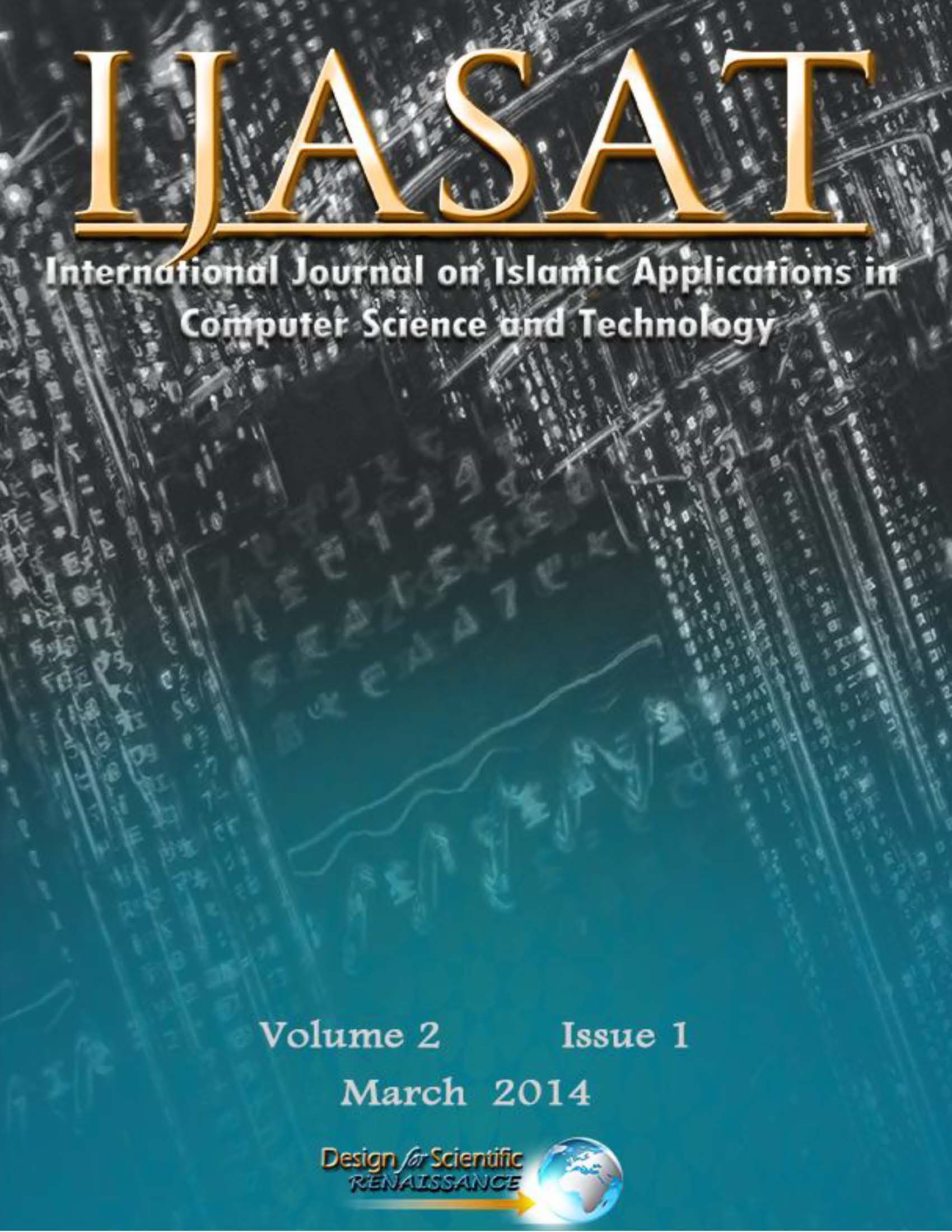Foreword
Abstract
By the grace of Allah, it is a great pleasure to introduce the first issue of the second volume of: The International Journal on Islamic Applications in Computer Science and Technology
The success and the welcome of the first three issues of this Journal by researchers from many countries, gave us great encouragement for continuing issuing in the due time. This Journal is aimed at publishing original research papers in the field of Islamic Applications in computer science and technology. This field is catching a momentum in the recent years. As a Journal interested in this field, it is the first International Journal of its specific field. As research is growing in this field, we hope that this Journal will be a platform for researchers working in the field to publish their research.
This issue contains four papers. By the grace of Allah, these papers come from different corners of Muslim world: Malaysia in the east of Muslim world, Morocco in the west, Saudi Arabia where the two Holly Mosques of Mecca and Medina do exist and the fourth from Palestine where the third Holly Mosque is under occupation. Three of the papers are related to the Holly Quran and the fourth one related to the Hadith of the Prophet (Peace be upon him and his family)
The first paper is entitled: Concept Extraction on Quranic Translation Text. In this paper, several experiments based on linguistics, statistical and hybrid approaches carried out, in order to identify which are the best techniques and approaches to extract terms from Quranic translation text. For linguistic approach, POS pattern was used, for statistical approaches, seven frequency-based were chosen as the techniques to choose frequency terms and for hybrid, both linguistic and statistical approaches were combined. The results obtained show that the hybrid approach is the best in identifying and filtering relevant concepts in Quranic domain corpus.
The second paper is entitled: Quran Interpretation (Tafseer) Books e-Portfolio: concept, content, and structure. This paper presents methodical approach for structuring and organizing of known and prominent Quran interpretation (Tafseer) books into digital portfolio or ePortfolio. Tafseer books’ ePortfolio can be efficiently used for building, creating, distributing digital and multimedia content on Quran, Tafseer, Quran and Islamic issues. Due to the uniqueness of Quran and most known Tafseer books, accurate and relevant information has to be of the highest importance, and needs to be authenticated by known scholars and/or institutions. The aim of this paper is to describe a systematic approach into organizing, structuring and developing ePortfolio for Tafseer books. Al Asfahani Tafseer book, “المفردات في غريب القرآن” - “Mufradat fi Gharib al-Quran”, has been chosen as the first project for ePortfolio development. Overall steps of the content collection and building ePortfolio approach is presented in this paper with the different phases involved.
The third paper is entitled: Towards Using UML Scenarios and Reverse-Engineering for Developing Quranic-Recitation System. In this paper, a methodology for using scenarios and to apply RE is used for developing and design concept of the system (Quranic recitation system). This methodology supports the designer in designing, visualizing, documenting artefacts in object-oriented software systems and provides notations and guidance to model both the static structure of the program and the dynamic behavior of the objects.
The last paper is entitled: Building Hadith Ontology to Support the Authenticity of Isnad. In this paper a domain specific ontology (Hadith Isnad Ontology) is built to support the process of authenticating/judging Isnad. Isnad or Sanad is the chain of narrators attesting to the historical authenticity of a particular Hadith. It helps differentiate between the accepted and rejected Hadiths The ontology was evaluate through Hadith example and DL-Queries. The developed ontology will be used (in a future work) to automatically generate a suggested judgment of Hadith Isnad.

